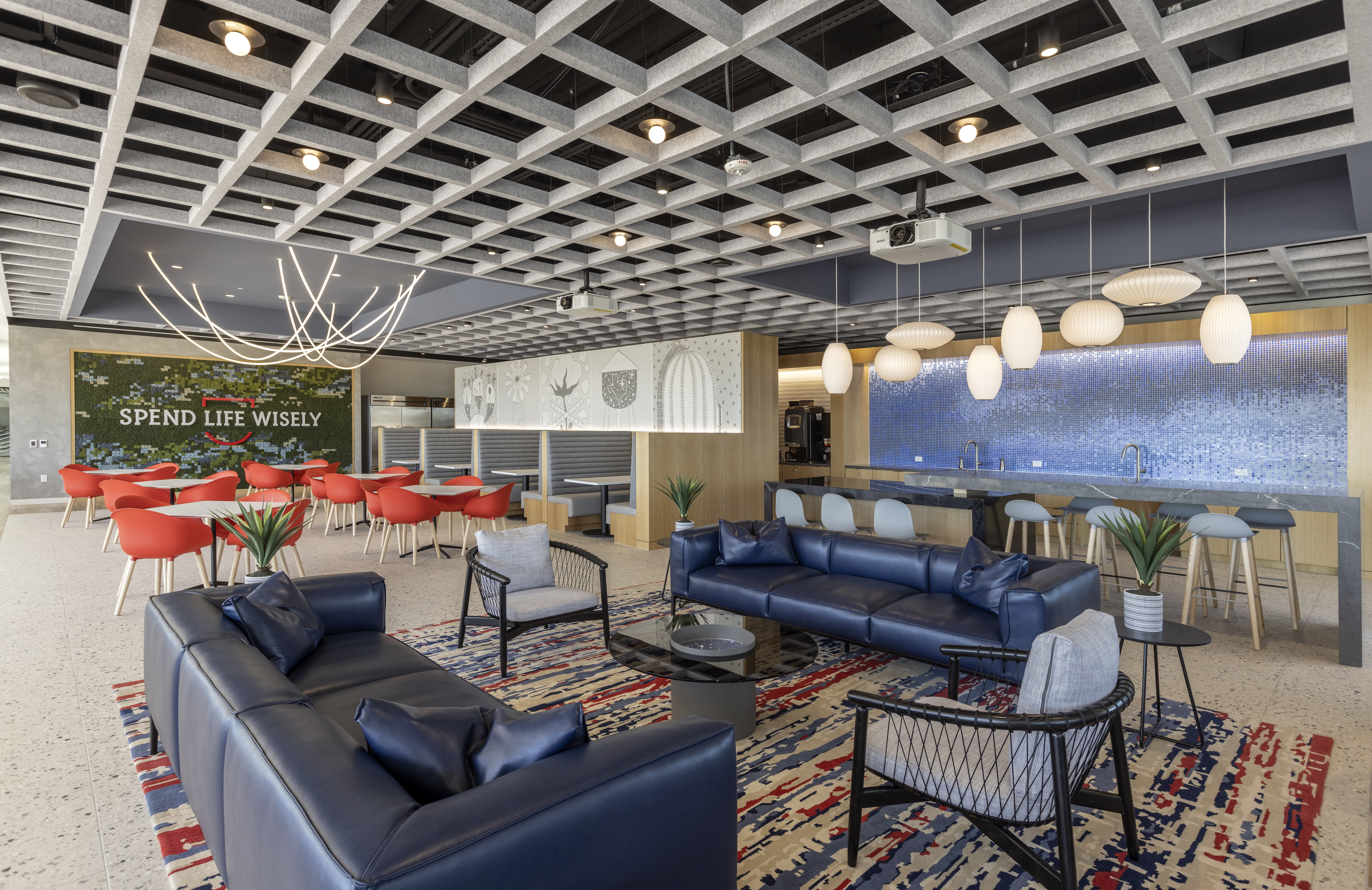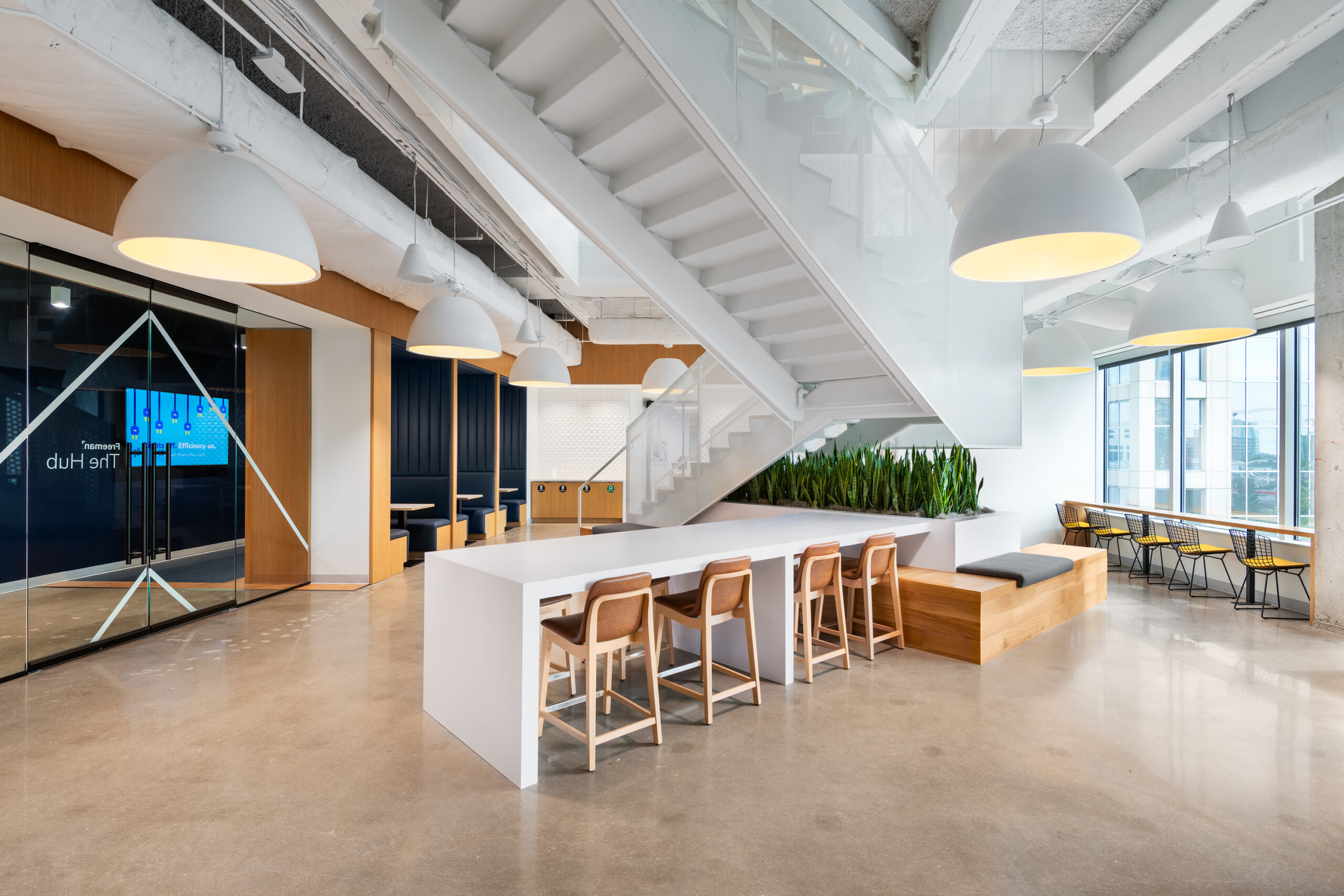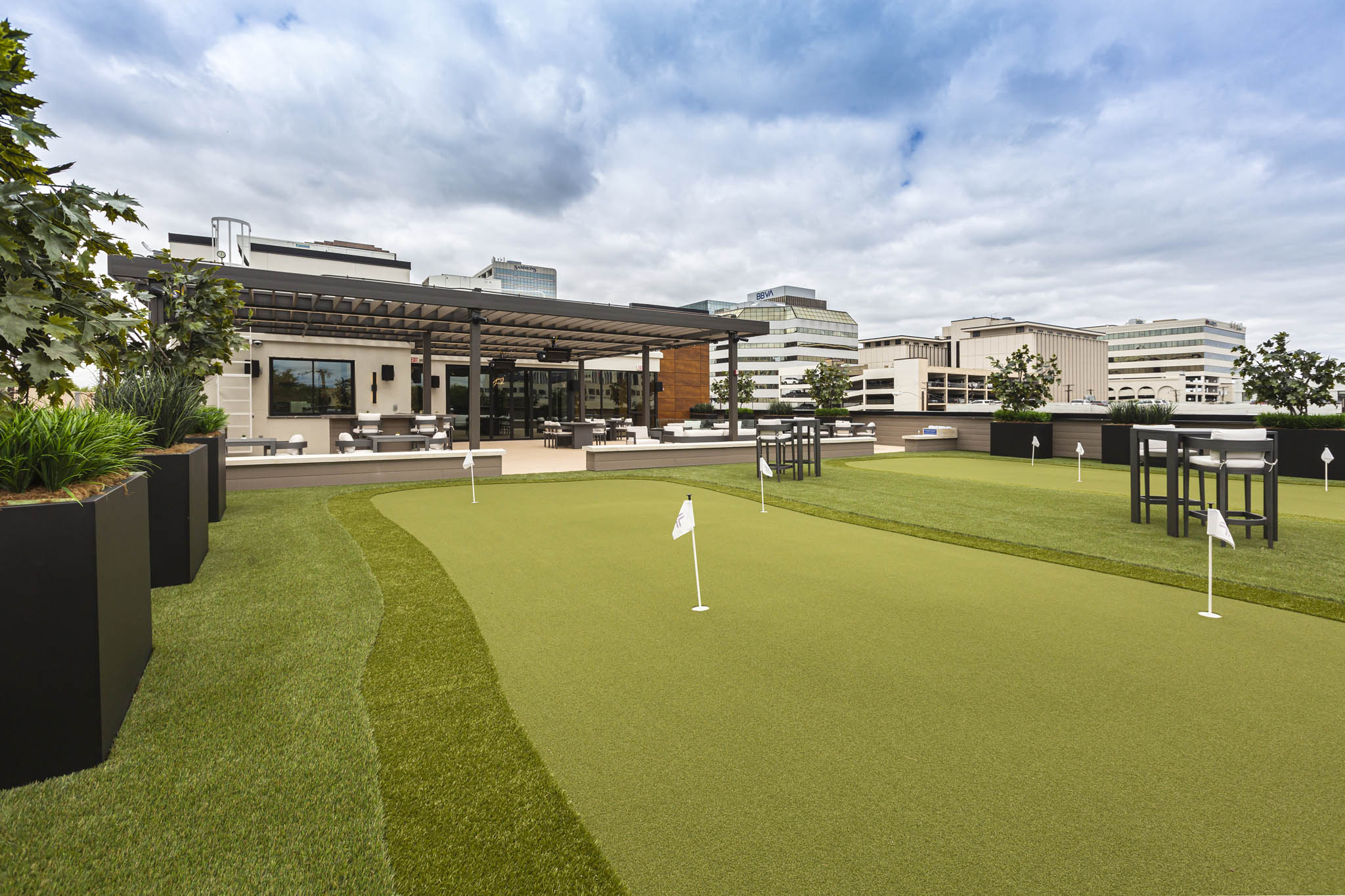Scott + Reid is proud to be featured in the Spring 2025 issue of Texas Architect magazine for our work on Greenhi...
Read MoreWhat Hybrid Office Design Looks Like

First United Mortgage Group (Plano, TX) / Our client, First United Mortgage Group, offers an array of social and wellness spaces for employees – including a gym and a break room (above) with varied seating styles
With the continued expansion and popularity of hybrid work, many of our clients are incorporating this flexibility into their new builds and remodels in both exterior and interior spaces.
What is hybrid work?
Hybrid work is a more flexible work model in which an employee spends time in the physical office of their business and working from home or from another remote location. Because of this, the time in the office often maximizes in-person interaction through group or individual meetings and encourages social engagement between employees while fostering an organization’s culture and sense of community.

The Freeman offices, one of our projects in Dallas, TX, offers a variety of work areas throughout.
What does hybrid office and workspace design look like?
Two words: flexibility and collaboration.
A hybrid office can be looked at as a “culture space” as much as a workspace. As individuals are able to work from home, they use their in-office time to provide “workers with a social anchor, facilitating connections, enabling learning, and fostering unscripted, innovative collaboration.”
The real key is offering flexibility for a variety of different styles of work and employees. “Having an ecosystem of spaces for different activities allows people to find the best setup for what they need to get done, including connecting virtually with their remote colleagues.”
Design for hybrid workspaces frequently incorporates:
- flexible workspaces
- less dedicated desks
- casual and more formal meeting areas
- social areas
- spaces for private work, quiet virtual meetings, and phone calls
- outdoor areas for communal gathering or wellness
Overall, it usually does look like less formal desks and private offices and can focus more on communal areas, enhanced kitchen and dining areas, and fun entertainment or social components. Zach Russell, senior director of employee experience at Bungie, says he wants to make the office a place “where people want to come versus where they have to come.”
Additionally, businesses need to be mindful of strengthening technology components to support video conferencing & virtual team meetings as well as making sure wifi is strong and available in most spaces (even outdoor patios).

Photo 3: At our TBK Bank project in Dallas, TX – the company offers an outdoor putting green paired with entertainment spaces.
According to Gensler, their “global workplace survey revealed that providing an ideal mix of experiences in the workplace is key to attracting people back into the office, with 45% of respondents claiming that they would come in one more day a week if provided with a diverse range of spaces. This was particularly true for younger generations, making it key for attracting and retaining new talent.”
Because the aim of hybrid work is to support community and collaboration during one’s time in the office, this also needs to be thought of during the design process. Incorporating ways to encourage collaboration and social interaction throughout the design is key. This might include comfortable sitting areas, libraries, expanded break rooms, and outdoor patios or balconies where employees can gather.
As hybrid work isn’t going away, Scott + Reid can assist our clients in adapting to the changing work styles of employees – offering flexibility within the spaces that may continue to be altered as-needed with shifts in business and work styles.


